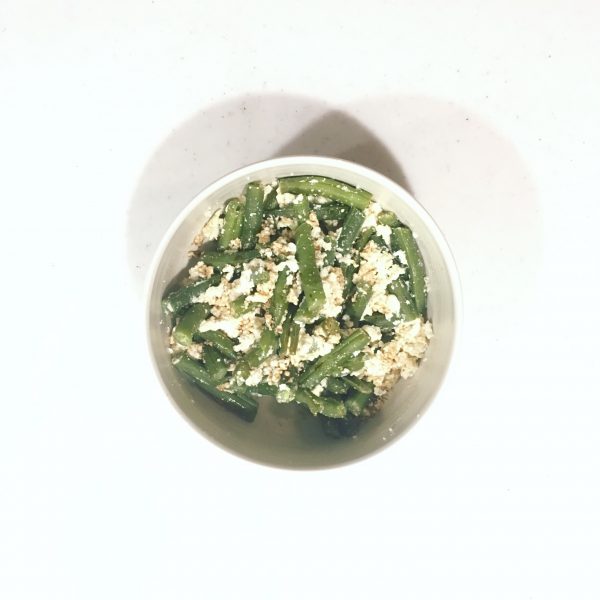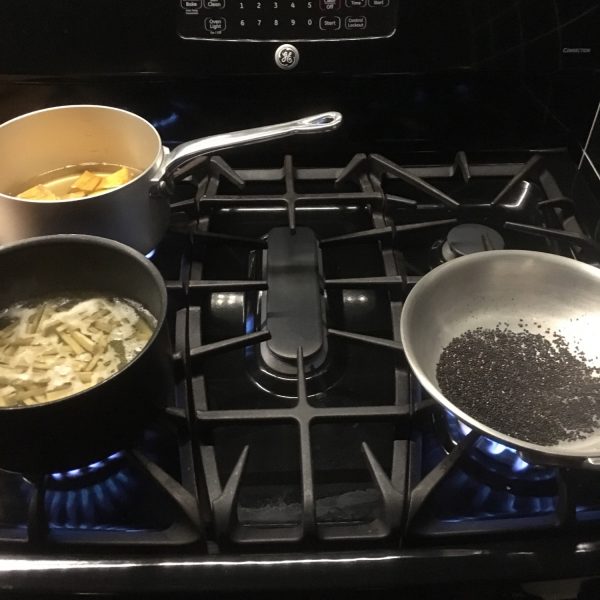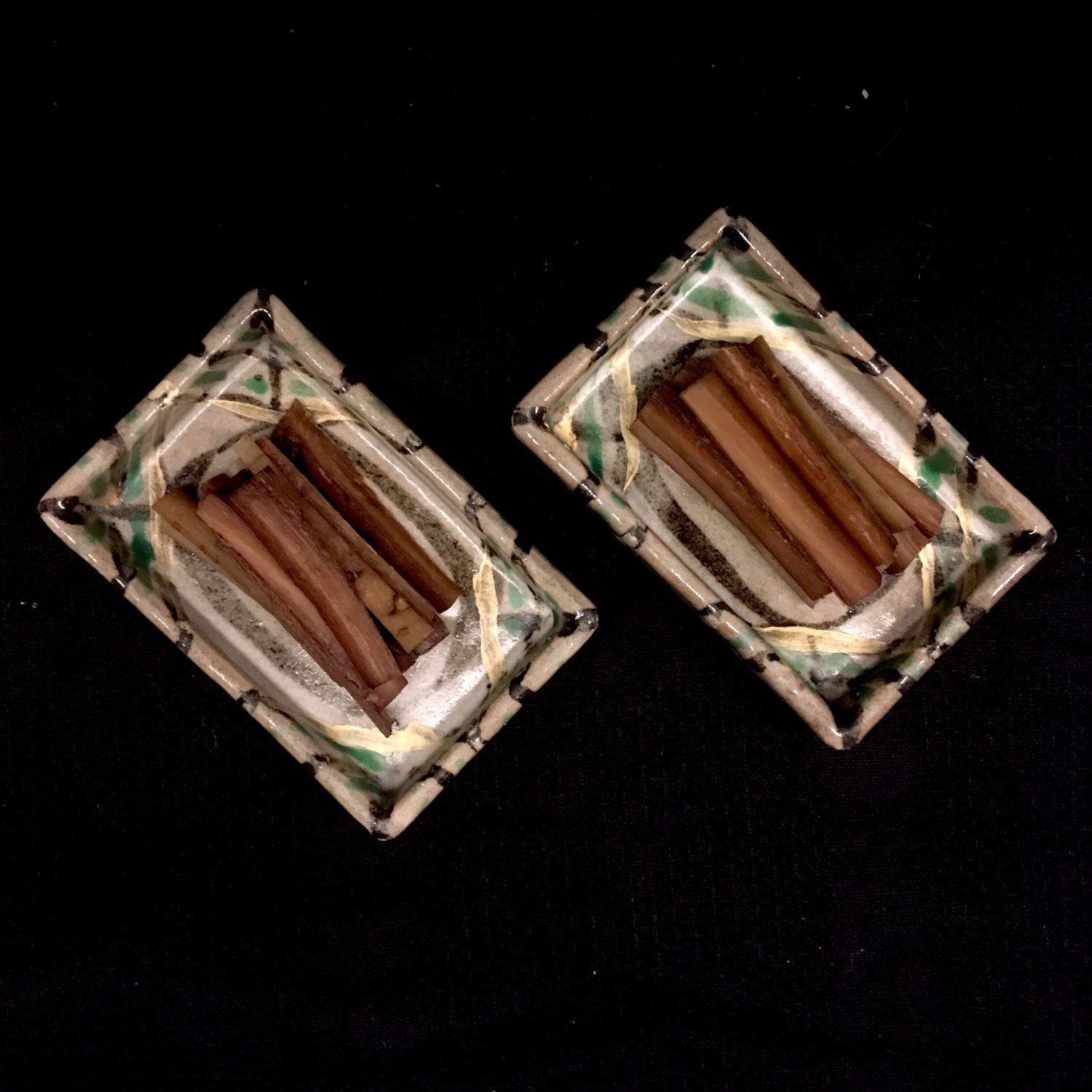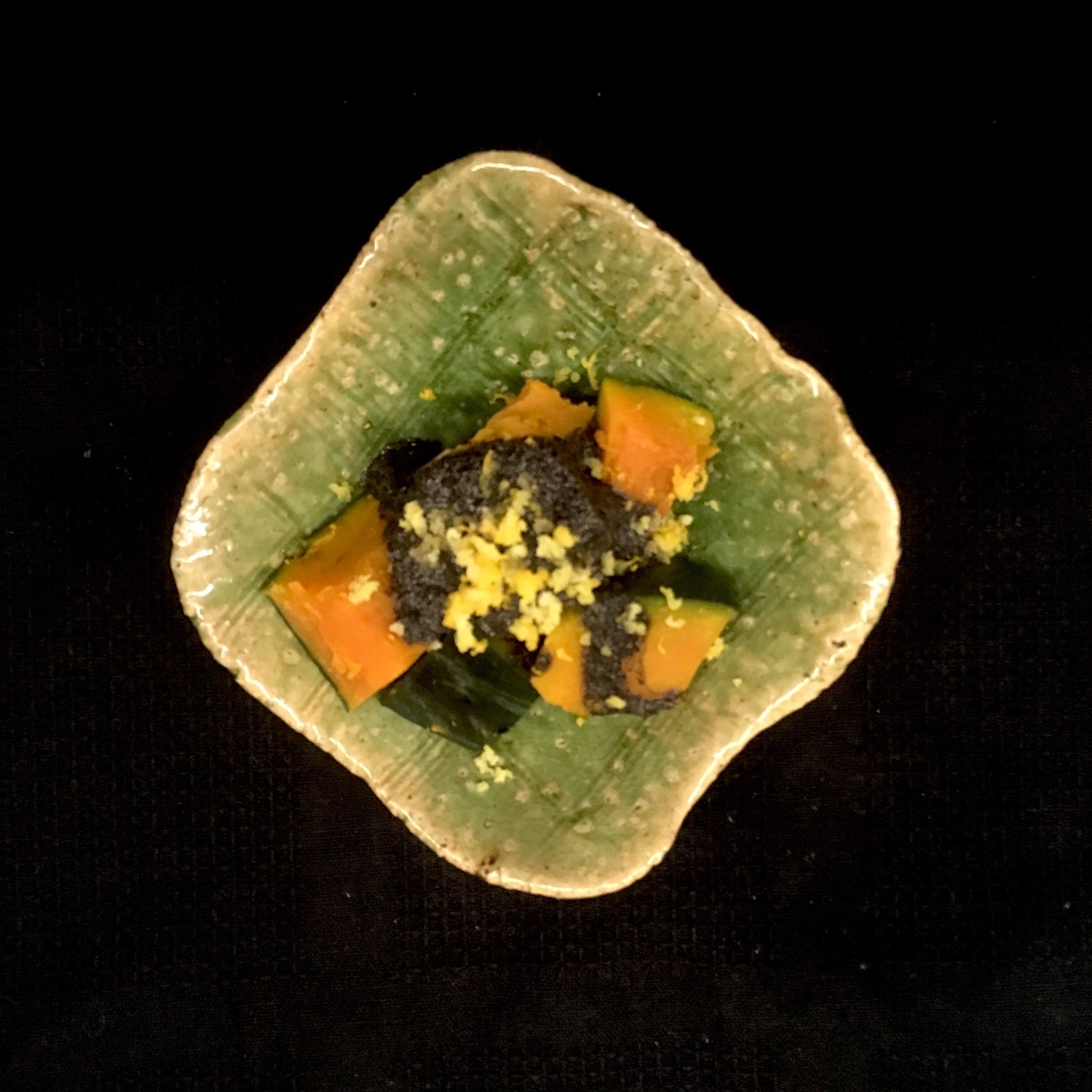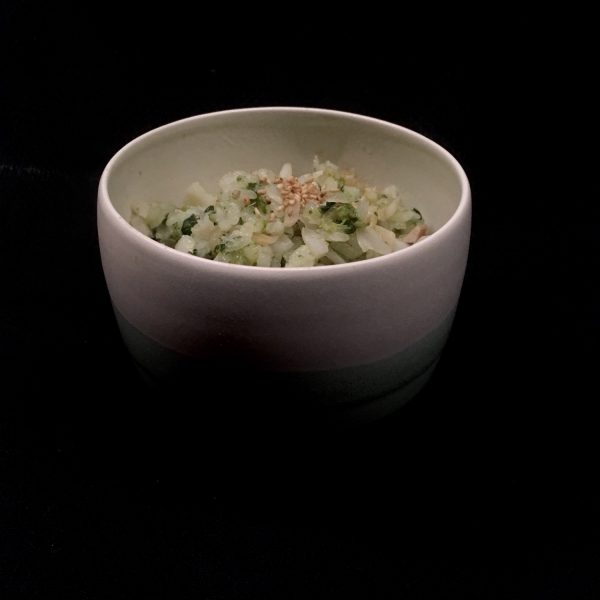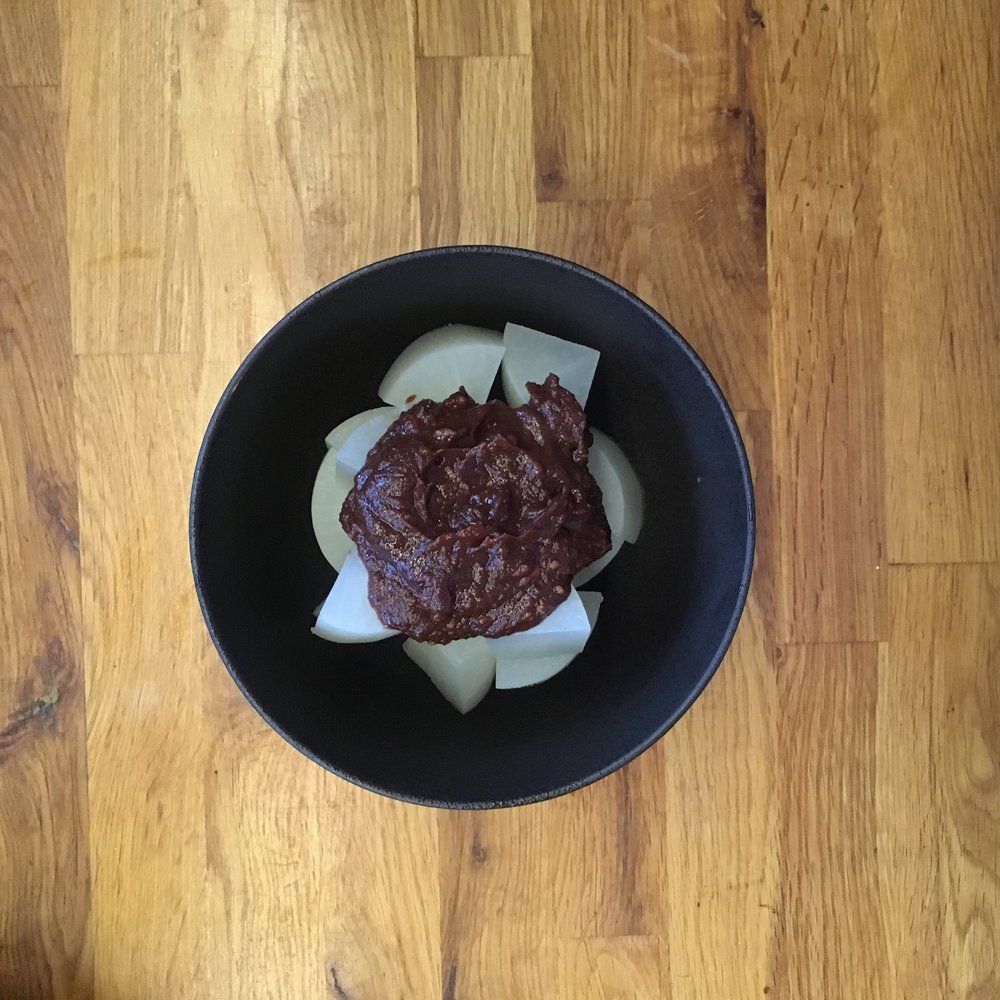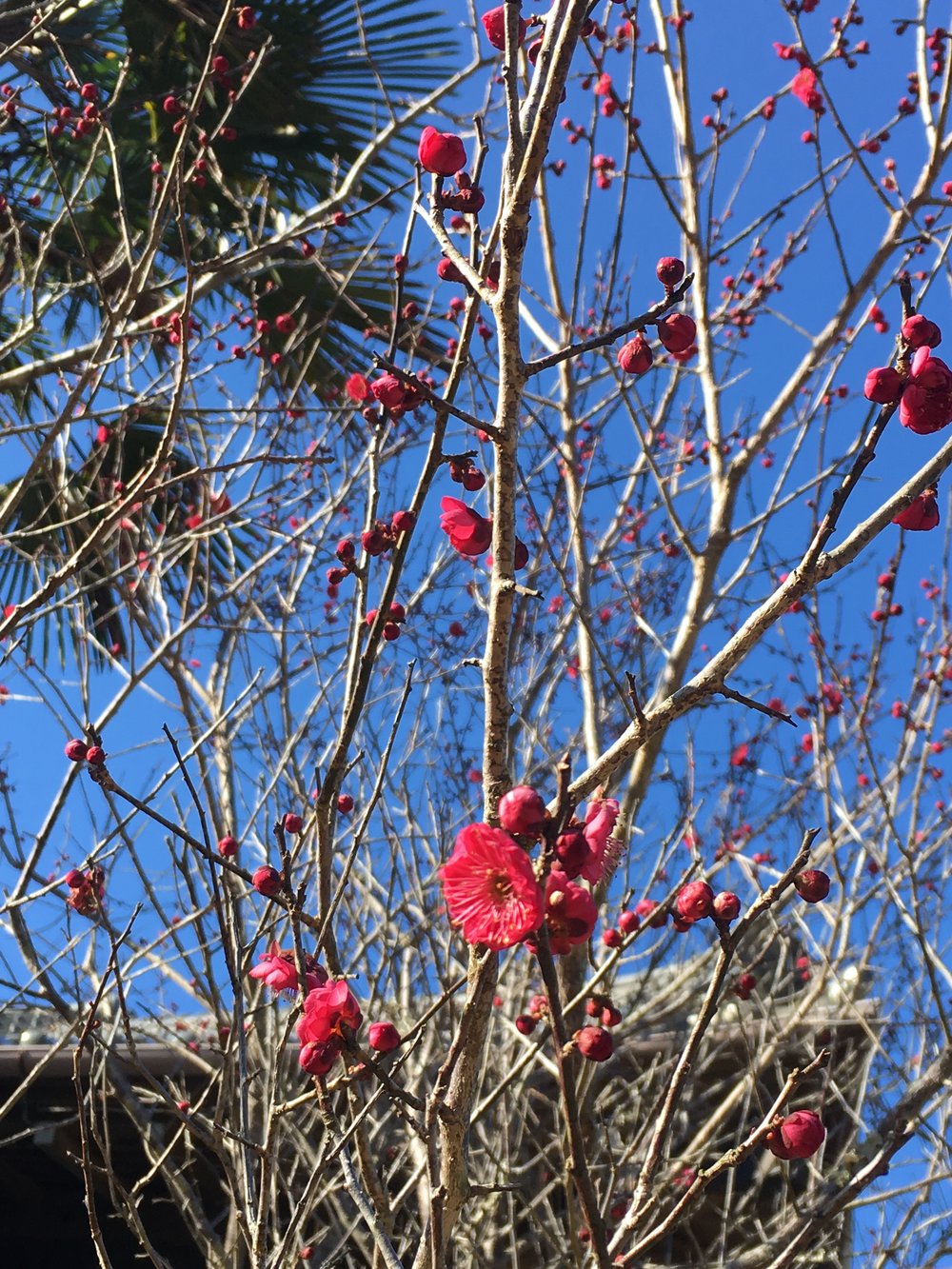This recipe is a classic from Japanese cuisine and Japanese cha kaiseki cuisine. I’ve eaten it many times when going to typical Japanese restaurants and I learned how to make it properly when I was taking cha kaiseki lessons. I use the same base in a persimmon recipe I created and it’s called tofu ae. It’s a sort of vegan creamy tofu dressing in a sense, that you can accommodate with many different vegetables all year round. In the fall with persimmons, winter with spinach, in the spring with green peas, and now with green beans, edamame… A full version of the recipe would include a bit of dashi, but I prepared a simpler version with only tofu and sesame, and a bit of salt. Here it is
Tofu ae
– a piece of hard tofu
– 4tbs of sesame, white or black depending of color effet wanted
– a pinch of salt
Drain the tofu with a weight on top. Once well drained, squeeze in a clothe to remove more water and obtain a paste. Grind the sesame (if you don’t have sesame, or the tools to grind it, just use gomasio)
Mix the tofu and the sesame, add a pinch of salt.
Boil a vegetable of your choice: green beans, edamame, broad beans… and mix with the tofu dressing.
